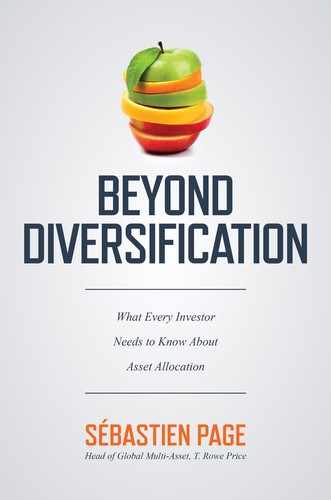Afterword
Theoretical Foundations of the Asset Allocation Decision
WHEN I RETIRED AFTER 40 YEARS OF TEACHING FINANCE, I left the field entirely. A clean break. I hopped on the snowmobile and started focusing on the next stage in my life. I suppose only Sébastien could convince me to reminisce. I’m glad I did.
Finance is a fascinating field. Its primary goal is to address decisions that lead to better resource allocation, and ultimately, to society’s well-being. Every decision that we make in life, including financial decisions, has an impact on our future. But no one can pretend to know the future. Therefore, finance is not about describing the past and publishing what has already happened. Rather, it’s about how we handle choices for which we do not yet know the outcome.
Finance is a science, just like physics or chemistry: it relies on solid theoretical foundations, involves rigorous empirical analysis, and leads to important practical applications.
Asset allocation, as presented in this book, provides a credible example of the science and practice of finance as applied to capital markets decisions. The goal is to allow all types of investors, from institutions to individuals, to obtain the highest possible return given the risk they are willing to bear. The steps involved are return forecasting, risk forecasting, and portfolio construction.
Return forecasting is the most popular topic in the literature. To forecast return for a financial asset means to forecast its price—those are two sides of the same coin. If we know the return, we know the price, and vice versa, after we include the income component. The price is not what we hope or imagine an asset is worth. It’s what others are willing to pay for it. Therefore, it depends on rational and behavioral factors. The problem is that when we invest, we can’t control the future price of an asset. The adage “You make money when you buy” makes a lot of sense: a bad investment decision, in the sense of a bad purchase price, can’t be reversed.
In this book, Sébastien explained that some of the theoretical foundations for return forecasting assume efficient markets. From a capital allocation perspective, efficient markets are an important condition for economic development. The best estimate of the price of an asset should be its intrinsic value, and no one should be able to consistently take advantage of the difference between the price and the intrinsic value.
Markets are efficient if all available information is incorporated in the price. Hence, fundamental analysts should get paid as a function of their contribution to making markets more efficient.
Risk forecasting dovetails with return forecasting. Theoretical foundations for risk forecasting include portfolio theory and diversification. Unlike returns, risks aren’t additive. Diversification enables investors to increase expected returns without commensurate increases in risk. When we build a portfolio, part of the risk disappears. The risk of an individual asset and its contribution to a portfolio’s risk aren’t the same. Of course, as Sébastien explained, diversification does not always work as intended.
It’s easier to represent the risk of an asset than its contribution to a portfolio’s risk. Academics have developed the concept of the “beta,” which represents how risky an asset is relative to another asset or relative to the market.
Even if we agree on a risk measure, there are more challenges to address in risk forecasting. Again, we’re not trying to explain the past. We must look forward. We must predict the range of possible outcomes around our expected return. Open questions include: Is risk stable through time? Can we use past data to model risk in the future? If so, which time period and data frequency should we use? If risk is not stable, which adjustments should we make?
Portfolio construction is the last step in the asset allocation process. Theoretical foundations for portfolio construction start at the intersection of the capital asset pricing model (CAPM) and utility theory. According to the CAPM, the optimal portfolio is a combination of the market portfolio (which should contain all risky assets) and the risk-free rate. In a portfolio that contains all risky assets, all diversifiable risks have been eliminated. Such a portfolio is said to be “perfectly diversified,” and the more we allocate to it, the higher our expected return.
As explained in this book, when in doubt, market capitalization weights provide an anchor to portfolio construction. The weight allocated to the market portfolio depends on the utility function, which represents the investor’s risk tolerance.
Never has a theory had so many practical implications in the field of finance. An example of its impact on portfolio management, in particular on asset allocation, has been the popularity of passive, index-based investing. But like all good theories, the CAPM has its flaws. It’s a single-period model, and it assumes perfectly efficient markets, to name two. The limitations of the model are therefore important, and its usefulness depends on analysts’ and portfolio managers’ ability to do their job skillfully. No theory, or model, or “recipe,” can replace good judgment.
In the end, better return and risk forecasts and a thoughtful portfolio construction process will allow these theories to perform better in practice. Quantitative methods, as well as the availability and analysis of data and information, have produced sophisticated models that have improved market efficiency. Proponents of the efficient market hypothesis must explain them in simple words, and they must interpret results in the context of their theoretical foundations. Sébastien did a great job on this book. But I’m a tough grader. I give him a solid “A–.”
Jean-Paul Page
Retired Professor of Finance
Université de Sherbrooke, Québec, Canada
